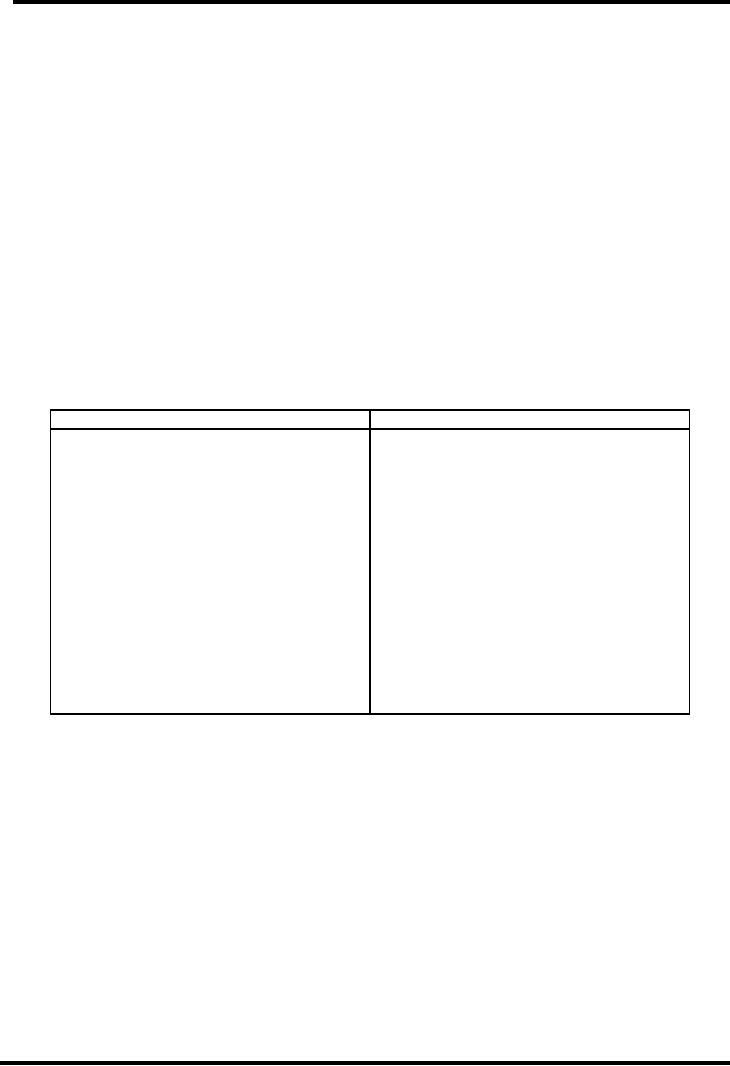 |
QUALITIES OF GOOD WRITING:Achieve appropriate readability: |
| << QUALITIES OF GOOD WRITERS |
| QUALITIES OF GOOD WRITING:Be concise, Be creative, Be correct >> |

Journalistic
Writing MCM310
VU
LECTURE
4
QUALITIES
OF GOOD WRITING
"Anyone
who wishes to produce a good
writing should endeavor, before he allows himself to
be tempted by
the
more showy qualities, to be
direct,
simple, brief, vigorous, and
lucid."
H.
W Fowler/The King's English further
sys:
Prefer
the familiar word to the
far-fetched.
Prefer
the concrete word to the
abstract.
Prefer
the single word to the
circumlocution.
Prefer
the short word to the long.
Prefer
the Saxon word to the
Romance.
"The
secret of good writing is
to
strip every sentence to its
cleanest components.
Every word that
serves
no
function, every long word
that could be a short word, every
adverb what carries the same
meanings that is
already
in the verb, every passive construction
that leaves the reader
unsure of who is doing what
these are
thousand
and one adulterants that
weaken the strength of a message."
William Zinsser/On Writing
Well
Our
success as journalists depends largely on
how well we communicate with
our readers. Good writing
can
help
you do that. Whatever is your
writing task- publication,
newspaper column, article, feature,
report or
program
announcement- these guidelines
can help you get the
results you want. Before you
begin:
�
Decide
on your message. Jot down a
single sentence describing what
you want to say to
your
readers.
Limit yourself to no more than
two or three main
ideas.
�
Know
your audience. Who are
they? What do they know? What
are their attitudes?
�
Define
your purpose. What is it you're
trying to accomplish-to inform,
persuade, or motivate?
Keep
your message, audience and
purpose in mind as you
write. This will help
you choose the words that
best
convey
your thoughts, communicate with
your readers, and set the
correct tone for your
purpose. In good
writing,
one size does not
fit all!
Goes
without saying, good writing
expresses a clear point, is
tightly structured, grammatically
and syntactically
correct,
substantive, and interesting.
To
express a clear point means
to convey the writer's main idea
or--in the case of descriptive
writing--the
significance
of the object, place or person described;
in other words, an attentive
reader should be able to
grasp
the
writer's purpose.
To
be tightly structured, writing
should contain logical or associative connections
and transitions which
clearly
express the relationship of the ideas
described.
To
be grammatically and syntactically
correct, writing
should adhere to the rules of Standard
American
English,
including proper punctuation
and spelling. If writers choose to
use unconventional syntax, they
should
be
able to justify their
choices.
To
be substantive, writing
should convey the impression that the
writer is informed about the subject.
The
writer
need not be an authority on the
subject but should demonstrate
awareness of its significance
and its
implications
within a specified context. Informed
writing might include any or
all of the following: citations of
authorities;
experiential evidence; discussion of
debatable issues related to
it, and relevant questions it
raises.
9

Journalistic
Writing MCM310
VU
To
be interesting, writing
should engage its readers
through original insights
and precise, uncliched
language
expressed
in a "human" voice. It should demonstrate
the writer's awareness of the specific
audience for whom
she
or he is writing (the audience's degree
of knowledge of the subject as well as
its age, ethnic background,
gender,
and assumptions).
Moreover,
the general characteristics of good
writing are, clarity completeness,
conciseness, creativity,
consideration,
correctness, credibility, courtesy,
and concreteness.
1.
Be clear: have a
definite purpose for writing
and make sure it is clearly
communicated up front. Be
bold
and connect quickly. In the
midst of the typhoon we needed to be
clear on our commands or
risk
adverse
reactions to the sea.
Check:
1.
Choose short, familiar conversational
words.
2.
Construct effective sentences and
paragraphs
3.
Achieve appropriate readability
4.
Include examples, illustrations, and
other visual aids, when
desirable.
CHOOSE
SHORT, FAMILIAR CONVERSATIONAL
WORDS.
FAMILIAR
PRETENTIOUS
About
Circa
After
Subsequent
Announce
Promulgate
Error
Inadvertency
For
example
e.g.
Home;
house
Domicile
Pay
Remuneration
That
is
i.e.
use
Utilization
Before:
After
our perusal of pertinent data
the conclusion is that a
lucrative market exists for
the
subject
property.
After:
The data we studied show
that your property is
profitable and in high
demand.
CONSTRUCT
EFFECTIVE SENTENCES AND
PARAGRAPHS
Length:
ASL:
17 to 20 words.
Range:
3 to 30 words or more
Unity:
"I
like Tom, and the Eiffel
Tower is in Paris." (Incorrect, no
unity)
Coherence:
1.
Before:
"Being
an excellent lawyer, I'm
sure you can help
us."
10

Journalistic
Writing MCM310
VU
After:
As
you are an excellent lawyer,
I am sure you can help
us.
Or
Being
an excellent lawyer, you can
surely help us.
2.
Before:
"His
report was about managers,
broken down by age and
sex."
After:
His
report focused on age and
sex of managers.
Or
His
report about managers focused on
their age and
sex.
Emphasis:
Before:
"The airplane finally
approached the speed of sound
and it became very difficult to
control."
After:
As
it finally approached the
speed of sound, the airplane
became very difficult to
control.
Achieve
appropriate readability:
1.
Fog Index Guide:
Invented
by Robert Gunning in 1952
Gives
the US school grade necessary
for comprehension of
text.
Calculated
by adding together the average number of words
per sentence and percentage
of words of
with
more than three syllables,
and then multiplying the sum
by 0.4.words
Scale
runs from 6 to 16. If above
12, the text will be
difficult to read.
2.
SMOG Index:
Stands
for `Simple Measure of
Gobbledygook'
Calculated
by multiplying the total number of words
in text by 30, dividing the
result by the number of
sentences,
taking the square root of the
result and multiplying it by
3
3.
Flesch Index:
Designed
for adult texts
Calculated
by:
-
Calculating
the average number of words per
sentence.
-
Multiplying
by 1.01.
-
Subtracting
the result from 206.8,
giving Result 1.
-
Calculating
the number of syllables per hundred
words.
-
Multiplying
by 0.846, giving Results
2.
-
Subtracting
Result 2 from Result 1,
giving the Flesch
Index.
Scale
runs from 0 to 100 with
increasing ease of readability.
Standard
writing is described as 17 words
per sentence and 147
syllables per
hundred
words,
with a resulting index of
64.
4.
PSK (Power-Sumer-Kearl) Index:
Designed
for primary school
texts
Calculated
by finding the average number of words
per sentence and multiplying
by 0.0778, finding the
number
of syllables per hundred
words and multiplying that
by 2.029, and then adding the
two results
together
5.
Sticht Index:
Designed
by US Army to test functional
literacy
Calculate
the ratio of single syllable
words to total words,
multiplying that ratio by
15, and subtracting
the
result
from 20.
11

Journalistic
Writing MCM310
VU
Before:
The
fact that all organic and
inorganic entities and artifacts go
through, on this planet at least, cycles
of
change
and decay is a well
established and integral feature of
life. The level of integration of this
fact into
human
culture is total, encompassing and
influencing religion, philosophy,
psychiatry, economics
and
marketing
and many other areas of
our lives. One numerate view
of the failure patterns associated
with this
cycle
of change is shown by the bath tub
curve. While not presuming to be
all encompassing this view of
the
failure
patterns does coincide with
significant areas of experience and
evidence for both plant,
equipment and
human
beings.
Totals:
Words = 107
Sentences
= 4
Syllables
= 187
Words
with more than three
syllables = 11
FOG
Index
=
14.81
SMOG
Index
=
84.99
Flesch
Index
=
31.8
After:
The
fact that all organic and
inorganic entities and artifacts go
through, on this planet at least, cycles
of
change
and decay is a well known
feature of life. This fact
also influences many aspects
of our lies including
religion,
philosophy, psychiatry, economics
and marketing. One view of the pattern of
change and failure is
shown
by the bath tub curve. Whilst this
does not represent all
types of failure, it does agree
with much of the
evidence
for both plant, equipment
and human begins.
Totals:
Words = 85
Sentences
= 4
Syllables
= 131
Words
with more than three
syllables = 5
FOG
Index
=
10.85
SMOG
Index
=
75.75
Flesch
Index
=
54.85
Include
examples, illuting ons, and
other visual aids, when
desirable:
Examples,
analogies and illustrations add
pictures to your
writing.
Visual
aids like headlines, tabulations,
itemization, pictures, charts etc.
make your writing easy to
go
through.
Underline,
number, color, or type in all
CAPITALS or italics
or use
wide margins adds emphasis
to
your
text.
Source:
http://www.canadaone.com/ezine/nov02/effective_writing.html
http://abcopayroll.com/news/200610sevencs.php
http://www.writingcenter.emory.edu/goodwrite.html
12
Table of Contents:
- INTRODUCTION TO JOURNALISTIC WRITING:Practical, THINGS TO KNOW
- QUALITIES OF GOOD WRITERS
- QUALITIES OF GOOD WRITERS
- QUALITIES OF GOOD WRITING:Achieve appropriate readability:
- QUALITIES OF GOOD WRITING:Be concise, Be creative, Be correct
- THE PROCESS OF WRITING:INVENTION, WHEN YOU START TO WRITE
- THE PROCESS OF WRITING II:ORGANIZING, DRAFTING, REVISING
- ALL ABOUT WORDS:HOW WORDS ARE FORMED?:SUFFIXES
- DICTIONARY-A WRITER’S LANGUAGE TOOL:KINDS OF INFORMATION
- PARTS OF SPEECH:Noun Gender, Noun Plurals, Countable Nouns
- BASIC CLAUSE PATTERNS
- ACTIVE AND PASSSIVE VOICE
- MODIFIERS AND SENTENCE TYPES:COMPOUND SENTENCES
- REPORTED SPEECH:Indirect Questions, Direct commands
- GRAMMATICAL SENTENCE – ISSUES:SUBJECT-VERB AGREEMENT
- GRAMMATICAL SENTENCE – ISSUES II:SENTENCE FRAGMENTS
- EFFECTIVE SENTENCE:PARALLELISM, NEEDED WORDS, SHIFTS
- STYLE: GUIDELINE AND PITFALLS I:COLLOQUIAL VS FORMAL, CIRCUMLOCUTION
- STYLE: GUIDELINE AND PITFALLS II:AMBIGUITY, REDUNDANCY, EUPHEMISM:
- PARAGRAPH WRITING: TYPES AND TECHNIQUES:STRUCTURE
- PARAGRAPH WRITING: TYPES AND TECHNIQUES:Putting on Our Play
- ESSAY WRITING:VARIOUS STRATEGIES FOR ESSAYS, PROMPTS
- SIGNAL WORDS:Non word Emphasis Signals
- EXPOSITORY WRITING:LOGICAL FALLACIES, APPEAL TO EMOTION
- THE WRITING STYLES: REPORT and NARRATIVE WRITING, SHORT REPORTS
- THE WRITING STYLES: DESCRIPTIVE AND PERSUASIVE WRITINGS, Observation
- RESEARCH WRITING AND DOCUMNETING SOURCES:Handling Long Quotations
- Summary and Précis Writing:CHARACTERISTICS OF GOOD SUMMARY
- Punctuation:THE PERIOD, THE COMMA, THE SEMICOLON, THE COLON
- MECHANICS:ABBREVIATIONS, NUMBERS, SPELLING, THE HYPHEN
- READING SKILLS FOR WRITERS:EDUCATED READING, STEPS
- PARTS OF A NEWSPAPER:Box-out, By-line, Caption, Exclusive, Feature
- THE LANGUAGE OF THE NEWSPAPERS II:BROADSHEET NEWSPAPER
- News Writing and Style I:WHAT TO LOOK FOR IN A NEWSPAPER
- NEWS WRITING II:Accuracy, Clarity, Style, Qualities of Effective Leads
- EDITORIAL WRITING:WRITING AN EDITORIAL:STRUCTURING AN EDITORIAL
- WRITING FEATURES:GENERATING FEATURE STORY IDEAS
- WRITING COLUMNS:Column and a news report, Purpose, Audience
- WRITING ARTICLES FOR NEWSPAPERS:The Heading, The Lead
- WRITING ANALYSIS:purpose, scope, method, results, recommendations
- LETTERS TO EDITORS:Four important aspects about letters, Organizing letters
- BROADCAST AND WEB NEWS WRITING:WRITE CONCISELY, BROADCAST STYLE
- WRITING PRESS RELEASE, REVIEWS AND OBITUARIES:Summary of Content:
- THE ART OF INTERVIEWINGS
- FINAL THOUGHTS:Practical, Job-Related, Social, Stimulating, Therapeutic